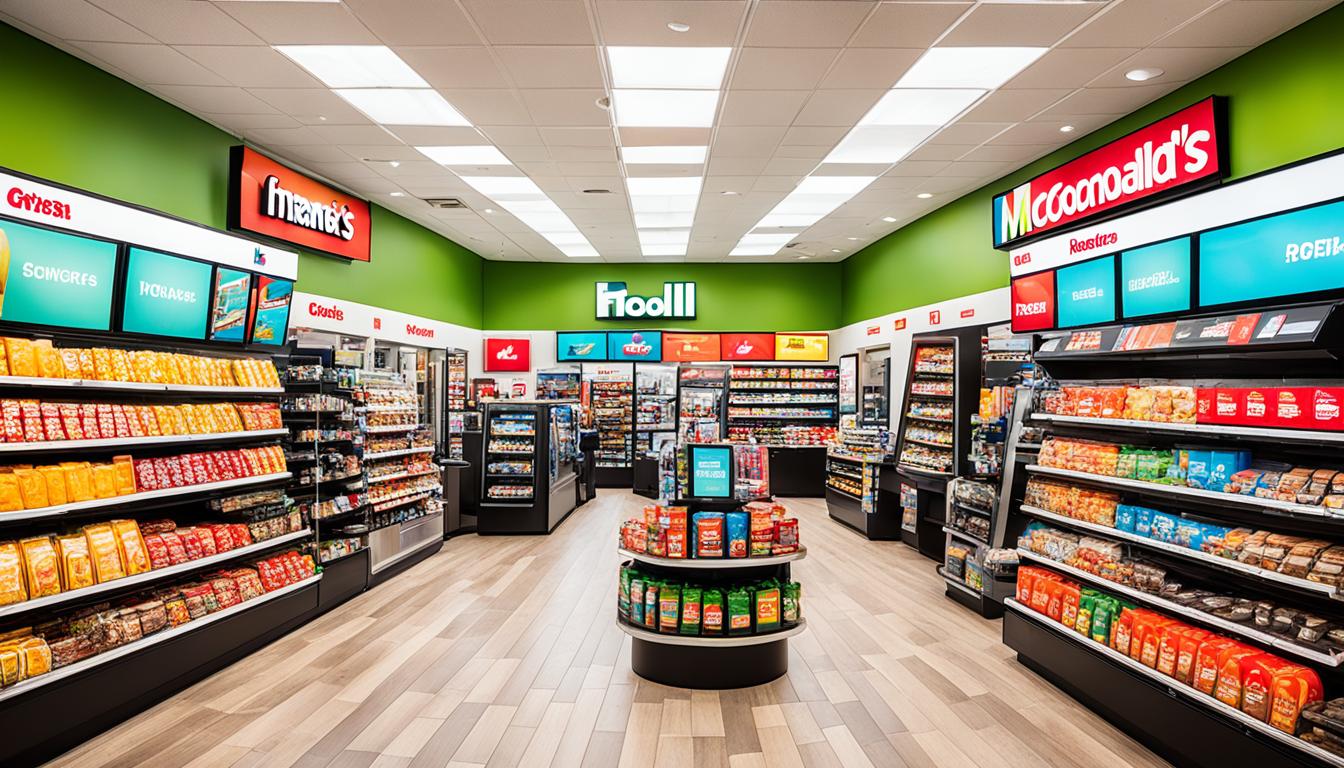CX marketing puts the customer at the center of its strategy. It aims to make the whole shopping journey better. This strategy gives people tailored experiences that build loyalty. By using data to understand and reach out to customers, companies can improve how they connect with people. This includes using many channels to communicate.
Businesses divide their customers into groups to give them what they want. They also start loyalty programs. This makes people think more highly of the brand. It makes customers happier, keeps them coming back, and helps the company make more money.
Key Takeaways:
- CX marketing is a customer-centric approach that optimizes the entire customer journey.
- Data-driven customer engagement and personalized marketing strategies are crucial in CX marketing.
- Omnichannel marketing tactics enable seamless interactions across various touchpoints.
- Targeted customer segmentation helps deliver tailored experiences to specific customer groups.
- Implementing customer loyalty programs can increase customer retention and drive revenue growth.
Understanding Customer Experience (CX)
Customer experience (CX) is how customers interact with a brand from start to finish. This includes both direct and indirect contact with the company. It’s about the entire journey, before, during, and after buying something.
Direct Contact
Direct contact happens when customers reach out themselves. They might buy a product, use a service, or ask for help. These actions play a big role in shaping their overall experience with the brand.
Indirect Contact
Indirect contact is about the passive interactions initiated mostly by the brand. This includes ads, social media, reviews, and word-of-mouth. These efforts influence what customers think and feel about the brand.
Many get customer experience mixed up with customer service. But customer service is just one part of the whole experience.
A deep understanding of customer experience looks at both direct and indirect interactions. Brands can improve their customer journey by focusing on these touchpoints. This makes for a smoother and more enjoyable experience for everyone.
Image
The Importance of CX for Your Business
Nowadays, companies realize that customer experience (CX) sets them apart. Through focused investments in CX, they gain numerous benefits, leading to success.
Putting CX first helps with keeping customers. Good experiences build strong bonds between customers and brands. This makes customers stick around, which means more money and saves costs in the long run.
Also, emphasizing CX lets businesses get to know their customers better. They analyze what customers like and need. Then, they provide tailored experiences. This not only satisfies customers but also boosts the brand’s worth.
Great experiences are key to winning new customers. When people are happy with a brand, they talk about it. They become brand ambassadors, persuading others to pick your business over others.
Moreover, focusing on CX can cut down on complaints. By tackling issues and smoothing out the customer journey, companies make customers happier. This also makes relationships stronger.
Choosing to enhance CX brings many pluses. From keeping loyal customers to pulling in new ones and reducing gripes. By making every interaction great, businesses can lead their industries and grow steadily.
The Key Components of CX
The core of a good customer interaction lies in four main areas of customer experience (CX). These key components are vital for companies wanting to make the customer’s journey better.
- Customer-centric culture: In a customer-focused culture, serving customers comes first. It’s about every worker aiming to give top-notch service and exceeding customer expectations.
- Well-designed touchpoints: For a great customer experience, each point of contact must be improved. This covers websites, mobile apps, support channels, and stores. It’s important for touchpoints to be easy for customers to use and connect with the brand.
- Consistent quality: Being consistent is crucial in CX. Customers want the same great service and experience everywhere they interact. This could be the product quality, how quick customer service is, or how easy it is to buy something. Consistency helps keep the experience positive.
- Customer satisfaction: At the end of the day, how satisfied customers are shows how good the CX is. Checking what customers say and how happy they are lets businesses make improvements. This makes the customer experience better.
By focusing on these key components of customer experience, companies can build a culture that puts customers first. This leads to more loyalty, higher satisfaction, and more growth.
| Component | Description |
|---|---|
| Customer-centric culture | Making customer service a top priority for everyone by having a customer-first attitude. |
| Well-designed touchpoints | Improving each contact point to fulfill customer needs and ensure a smooth experience. |
| Consistent quality | Keeping a high level of quality at all touchpoints to guarantee a good experience. |
| Customer satisfaction | Always checking and boosting customer happiness to measure how effective the CX strategy is. |
The table above gives a brief overview of the main parts of customer experience. Adopting these elements can assist businesses in giving outstanding CX and creating lasting bonds with their clients.
Traits of a Quality Customer Experience
To stand out, businesses need top-notch customer experiences. It’s crucial to know and meet what customers expect at every step. Here’s what makes a customer experience great:
1. Listening to Customer Feedback
Improving CX starts with hearing what customers have to say. Their feedback sheds light on what they like, need, and want. Companies can find room to grow and better their services by paying attention to feedback. They use surveys, social media, and more to listen.
2. Reducing Friction in the Customer Journey
Making the customer journey smooth is key. By getting who their buyers are and their issues, companies can remove hurdles. This might mean making their website or app easier to use or improving service. Happier customers stick around when things are easy for them.
3. Customer Journey Optimization
Optimizing the customer journey involves looking closely at every interaction customers have with a brand. Companies aim to make these moments as good as possible. They work on sending the right messages and giving personalized tips. A well-thought-out journey keeps customers engaged and satisfied.
4. Personalized Experiences
Custom experiences make customers feel special. Using what they know about customers helps businesses tailor what they offer. This can mean sending messages that speak directly to a customer’s needs or giving discounts just for them. Personal touches create a bond with customers.
| Trait | Description |
|---|---|
| Listening to Customer Feedback | Actively seeking and incorporating customer feedback to improve CX. |
| Reducing Friction | Identifying and eliminating obstacles that hinder the customer journey. |
| Customer Journey Optimization | Analyzing and optimizing each touchpoint to create a seamless experience. |
| Personalized Experiences | Customizing offerings, communications, and recommendations based on customer preferences. |
Examples of Great CX
Burger King and Walmart stand out for their excellent customer service. They use smart strategies like analyzing data and focusing on the customer. This helps them provide top-notch service.
Burger King uses data to make ordering easier for its customers. They’ve made their mobile ordering system simple to use. This makes the customer’s experience better and more convenient.
Walmart works hard to make sure their customers are happy. They tackle problems quickly and offer help anytime. This approach makes customers feel important and builds loyalty.
Both companies put their customers first in everything they do. They think about what the customer needs. This makes their services and products really stand out. Customers remember these positive experiences.
Burger King and Walmart show that understanding customers is key. By using data, focusing on design, and being there for their customers, they succeed. Other businesses can learn from them to improve how they treat customers.
What is Customer Experience Marketing?
Customer experience marketing (CEM) centers on giving positive experiences at all customer touchpoints. It seeks to forge an emotional bond with the brand. To manage the customer journey well, knowing their likes, customizing their experiences, and using their feedback is crucial.
Examples of Effective CX Marketing
Several companies are known for their stand-out customer experiences. Slack, Adobe Creative Cloud, and Airbnb make customer satisfaction a top priority. They use innovative approaches to stay ahead.
Slack: User-Centric Design and Collaboration
Slack leads in collaboration tools, focusing on users’ needs. Its platform is easy to use, promoting team communication. The simple onboarding and intuitive design ensure users find what they need fast. Slack’s commitment to user-centered design boosts productivity and efficiency.
Adobe Creative Cloud: Nurturing Brand Loyalty
Adobe Creative Cloud does more than offer tools for creatives. They run the “Creative Residency” program to support up-and-coming talent. This program gives artists and designers resources to shine. Adobe boosts loyalty and showcases the potential of their software through this support.
Airbnb: Omnichannel Customer Service and Feedback
Airbnb shines with its consistent service across all channels. They value feedback from guests and hosts alike. This approach helps Airbnb improve and offer better experiences. Their commitment to listening and evolving makes them a top choice in travel.
The stories of Slack, Adobe, and Airbnb show the impact of focusing on customer experience. By valuing design, loyalty, and feedback, they’ve built lasting success. These efforts lead to growth and strong customer bonds.
| Company | Approach | Key Highlights |
|---|---|---|
| Slack | User-centric design | Seamless onboarding, intuitive interface |
| Adobe Creative Cloud | Nurturing brand loyalty | “Creative Residency” program for emerging talent |
| Airbnb | Omnichannel customer service | Extensive feedback collection, consistent experiences |
These companies are leaders in CX marketing. Their strategies focus on design, loyalty, and customer service. Their efforts lead to noteworthy customer experiences and business achievements.
Benefits of Customer Experience Marketing
Customer experience marketing (CEM) brings big wins for businesses. It makes brands stand out by giving amazing experiences. This captures customer loyalty, keeping them coming back. This means more money in the long run.
CEM also cuts business costs. It makes companies run smoother and spend less. Happy customers mean fewer complaints. Thus, businesses save on support costs.
Moreover, CEM boosts a brand’s value. It wins customer trust and good vibes. When customers feel connected to a brand, they stick around. This raises the brand’s reputation and value.
So, using CEM gives businesses lots of perks. They get to edge out competitors and keep customers loyal. They also see more revenue, less costs, and a stronger brand.
Benefits of Customer Experience Marketing:
- Competitive advantage
- Customer loyalty
- Revenue growth
- Cost reduction
- Brand equity
The chart above shows how CEM brings key benefits. By giving standout experiences, brands get ahead. This keeps customers loyal and boosts sales. By focusing on customer experiences, businesses also cut costs and gain customer trust. This, in turn, strengthens the brand.
Conclusion
Customer experience marketing is vital for positive customer interactions. It helps in creating brand loyalty and gaining a competitive edge. Companies can win by understanding customer needs, making experiences personal, and improving customer journey touchpoints.
Investing in customer experience (CX) has many benefits. It boosts customer happiness, increases revenue, and lowers costs. Great experiences make customers loyal, draw in new ones, and lessen complaints. Personalized experiences and listening to feedback set businesses apart.
For top-notch customer experience marketing, being customer-centric is key. Companies should focus on amazing customer interactions and invest in resources for personalized experiences. This approach helps brands grow and thrive in a competitive environment.





